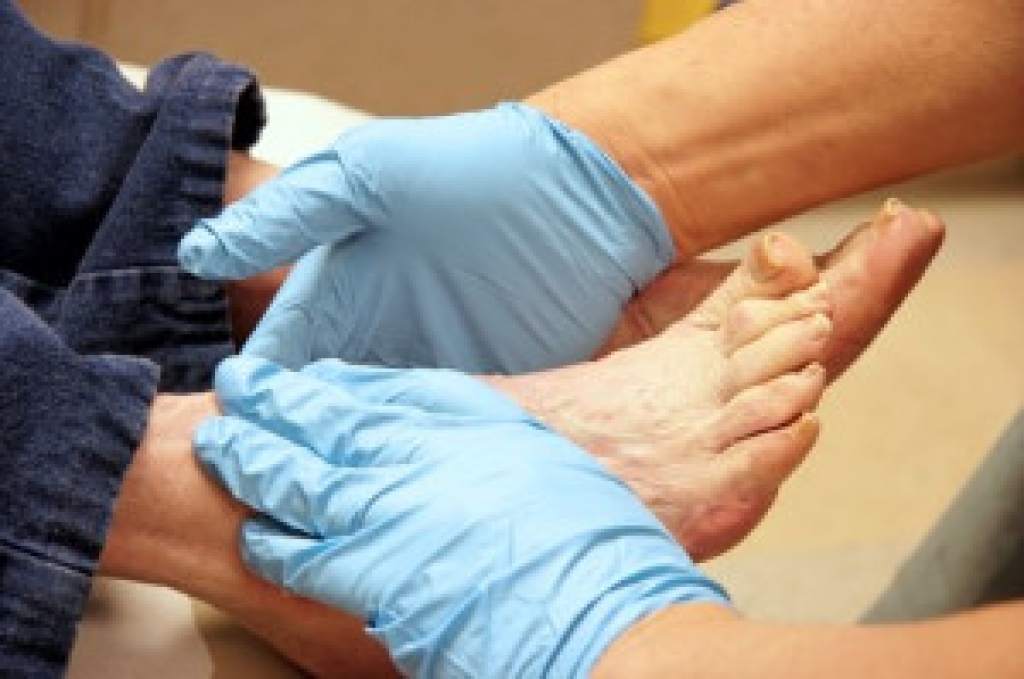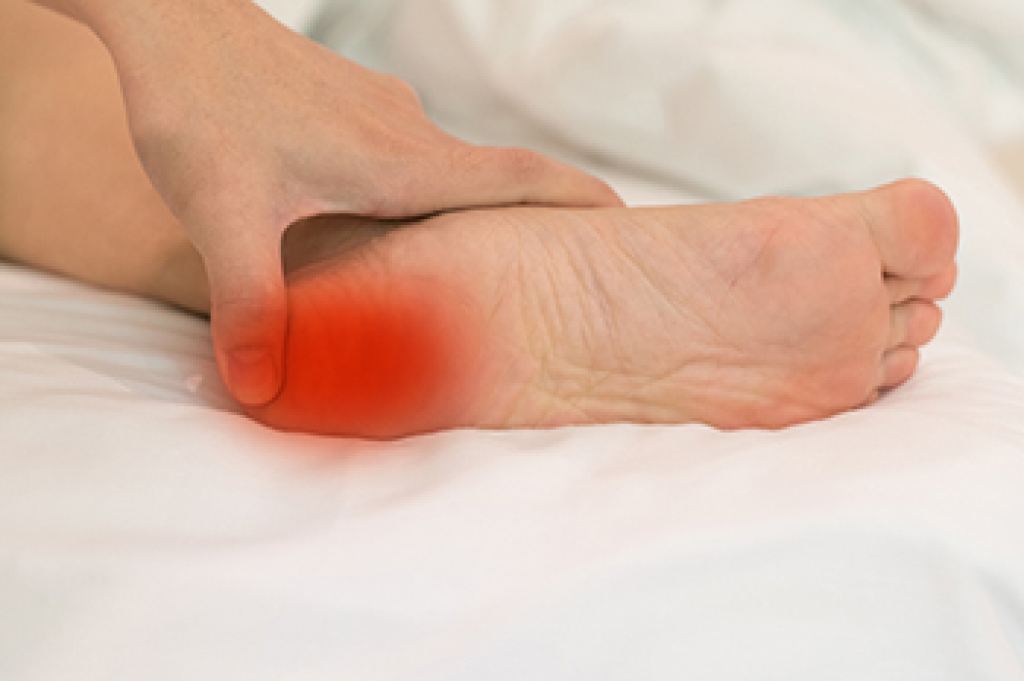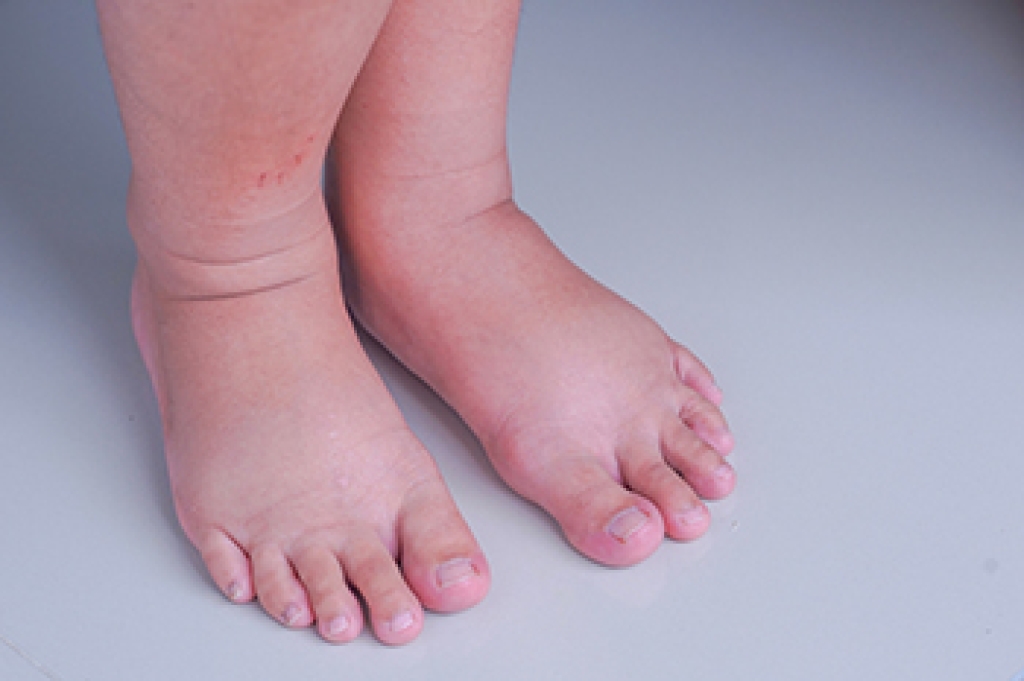Blog
Treatment Options for Diabetic Nerve Pain

Living with diabetes presents a unique set of challenges, one of which is diabetic nerve pain, also called diabetic neuropathy. This condition can lead to sensations of tingling, numbness, and discomfort in the lower extremities, especially your feet. Medication prescribed by a podiatrist, including anticonvulsants, antidepressants, and pain relievers, can provide relief from diabetic nerve pain. Additionally, making lifestyle adjustments, such as maintaining stable blood sugar levels through dietary modifications and regular exercise, can help to reduce nerve pain. In some cases, nerve blocks may be recommended, temporarily numbing affected nerves to alleviate pain. Topical treatments, such as creams, gels, or patches containing capsaicin or lidocaine, can also be helpful in targeting localized discomfort. It's important for diabetics to practice routine foot care, including vigilant inspection for injuries, to prevent serious complications. Certain exercises to improve muscle strength and balance may also reduce the risk of both falls and further nerve damage. Early intervention and consistent monitoring are paramount for effectively managing this problem. If you are experiencing diabetic nerve pain, it is suggested that you make a podiatrist a regular member of your healthcare team.
Diabetic foot care is important in preventing foot ailments such as ulcers. If you are suffering from diabetes or have any other concerns about your feet, contact Vincent, Vess from Fourth River Foot & Ankle. Our doctor can provide the care you need to keep you pain-free and on your feet.
Diabetic Foot Care
Diabetes affects millions of people every year. The condition can damage blood vessels in many parts of the body, especially the feet. Because of this, taking care of your feet is essential if you have diabetes, and having a podiatrist help monitor your foot health is highly recommended.
The Importance of Caring for Your Feet
- Routinely inspect your feet for bruises or sores.
- Wear socks that fit your feet comfortably.
- Wear comfortable shoes that provide adequate support.
Patients with diabetes should have their doctor monitor their blood levels, as blood sugar levels play such a huge role in diabetic care. Monitoring these levels on a regular basis is highly advised.
It is always best to inform your healthcare professional of any concerns you may have regarding your feet, especially for diabetic patients. Early treatment and routine foot examinations are keys to maintaining proper health, especially because severe complications can arise if proper treatment is not applied.
If you have any questions, please feel free to contact our offices located in Pittsburgh, White Oak, and McKeesport,PA . We offer the newest diagnostic and treatment technologies for all your foot care needs.
Sever’s Disease Is a Common Foot Condition in Growing Kids

Sever's disease, also known as calcaneal apophysitis, is a prevalent heel condition that mainly affects children and adolescents during their growth spurts. Contrary to its name, it's not an actual disease, but rather an overuse injury characterized by inflammation of the growth plate in the heel bone, or calcaneus. Sever's disease generally strikes during the pre-teen and teenage years when the heel bone is still developing. The rapid growth of bones and muscles can lead to tension and stress on the heel's growth plate, resulting in pain and discomfort. This pain is typically experienced in the back of the heel, especially during activities such as running, jumping, or walking. Sever's disease is more common in active youngsters, particularly those involved in sports with repetitive impact on the heel. While it can be painful and frustrating, it is generally a self-limiting condition that tends to resolve once the growth plate fully matures. If your child has heel pain, it is suggested that you contact a podiatrist who can accurately diagnose and treat Sever’s disease.
Sever's disease often occurs in children and teens. If your child is experiencing foot or ankle pain, see Vincent, Vess from Fourth River Foot & Ankle. Our doctor can treat your child’s foot and ankle needs.
Sever’s Disease
Sever’s disease is also known as calcaneal apophysitis, which is a medical condition that causes heel pain I none or both feet. The disease is known to affect children between the ages of 8 and 14.
Sever’s disease occurs when part of the child’s heel known as the growth plate (calcaneal epiphysis) is attached to the Achilles tendon. This area can suffer injury when the muscles and tendons of the growing foot do not keep pace with bone growth. Therefore, the constant pain which one experiences at the back of the heel will make the child unable to put any weight on the heel. The child is then forced to walk on their toes.
Symptoms
Acute pain – Pain associated with Sever’s disease is usually felt in the heel when the child engages in physical activity such as walking, jumping and or running.
Highly active – Children who are very active are among the most susceptible in experiencing Sever’s disease, because of the stress and tension placed on their feet.
If you have any questions, please feel free to contact our offices located in Pittsburgh, White Oak, and McKeesport,PA . We offer the newest diagnostic and treatment technologies for all your foot care needs.
Exercises to Offset the Flip Flop Craze

Flip flops are a summertime staple loved for their easy, breezy style. However, those flat, flimsy soles can spell trouble for your feet. Wearing flip-flops excessively can lead to issues such as arch pain, plantar fasciitis, and even knee problems due to the lack of support. To counter these drawbacks, incorporating foot exercises into your routine can be a game changer. This can begin with towel scrunches, which are done by gripping a towel with your toes and pulling it toward you. Toe stretches can be performed by picking up marbles with your toes, improving flexibility. Calf raises strengthen the lower leg muscles. Additionally, performing the ankle alphabet is a simple way to enhance mobility. Practicing these exercises regularly may mitigate the pitfalls of wearing flip-flops and help maintain happy, healthy feet the year round. If you have questions about what foot stretches are best for you, it is suggested that you make an appointment with a podiatrist.
Flip-flops are not always the best choice of footwear. If you have any concerns about your feet or ankles, contact Vincent, Vess from Fourth River Foot & Ankle. Our doctor will assist you with all of your foot and ankle needs.
Flip-Flops and Feet
When the weather starts warming up, people enjoy wearing flip-flops. Flip-flops are comfortable, stylish, and easy to slip on and off; they're perfect for any summer beach goer. However, these shoes can cause harm to the feet.
How Can Flip-Flops Affect Me Long-Term?
- Ankle problems
- Hip problems
- Lower back problems
- Pain in the balls of the feet
- Problems with foot arches
- Changes in the way you walk
Are There Injuries Associated with Flip-Flops?
Yes. Since flip-flops are relatively weak and do not provide the same amount of support as sneakers, people who wear flip-flops regularly are more susceptible to injuries. On top of that, the open nature of the shoe makes your feet more prone to other problems, such as cuts and even infections. Common injuries and ailments include:
- Sprained ankles
- Blisters
- Infections
- Cuts and Scrapes
I like Wearing Flip-Flops. Are There Safe Alternatives?
When buying flip-flops, try to find ones that have sturdy soles and that are made of high-quality materials that will support for your feet. These flip-flops will cost more but will also last longer as a result.
If you have any questions, please feel free to contact our offices located in Pittsburgh, White Oak, and McKeesport,PA . We offer the newest diagnostic and treatment technologies for all your foot care needs.
Common Causes of Swollen Feet

Swollen feet, while often benign, can be discomforting and may point to an underlying issue. Various factors can contribute to this condition. Prolonged standing or sitting, especially in one position, can impede proper blood circulation, leading to fluid accumulation and swelling. Wearing inadequate footwear, whether too tight or unsupportive, can restrict blood flow and aggravate the problem. Medical conditions such as hypertension or kidney disease can cause fluid retention in the lower extremities. Pregnancy also plays a role due to increased pressure on blood vessels and hormonal shifts. Injuries like sprains or fractures can trigger inflammation and swelling as part of the body's healing response. Recognizing the cause of swollen feet is important for effective management. Elevating your feet, staying hydrated, and engaging in a consistent exercise routine can be helpful. However, persistent or severe swelling demands medical attention to address the root cause. If you have swollen feet, it is suggested that you are under the care of a podiatrist who can help you to manage this condition.
Swollen feet can be a sign of an underlying condition. If you have any concerns, contact Vincent, Vess of Fourth River Foot & Ankle. Our doctor can provide the care you need to keep you pain-free and on your feet.
Swollen feet are a common ailment among pregnant women and people who stand or sit for extended periods. Aging may increase the possibility of swollen feet and patients who are obese often notice when their feet are swelling too. There may be medical reasons why swollen feet occur:
- Phlebitis - A condition that causes the veins to become inflamed and can also cause leg pain.
- Liver disease - This may lead to low blood levels of albumin which is a protein. This can cause fluid in the blood to pass into the tissues and several areas of the body can become swollen.
- Heart failure - When the heart doesn’t pump properly the blood that is normally pumped back to the heart can pool in the veins of the legs causing swollen feet.
- Kidney disease - One of the main functions of the kidneys is releasing excess fluid in the body. This type of condition can make it difficult for the kidneys to function properly, and as a result the feet may become swollen.
- Deep-vein thrombosis (DVT)- This is a serious condition where blood clots form in the veins of the legs. They can block the return of blood from the legs to the heart which may cause the feet to swell. It is important to be treated by a podiatrist if this condition is present.
Swollen feet can also be caused by bone and tendon conditions, including fractures, arthritis, and tendinitis. Additionally, there may be skin and toenail conditions and an infection may cause the feet to swell. Patients who take medicine to treat high blood pressure may be prone to getting swollen feet.
Many patients elevate their feet to help relieve the swelling and this is generally a temporary remedy. When a podiatrist is consulted the reason behind the swelling can be uncovered and subsequently treated.
If you have any questions please contact our offices located in Pittsburgh, White Oak, and McKeesport,PA . We offer the newest diagnostic and treatment technologies for all your foot and ankle needs.

